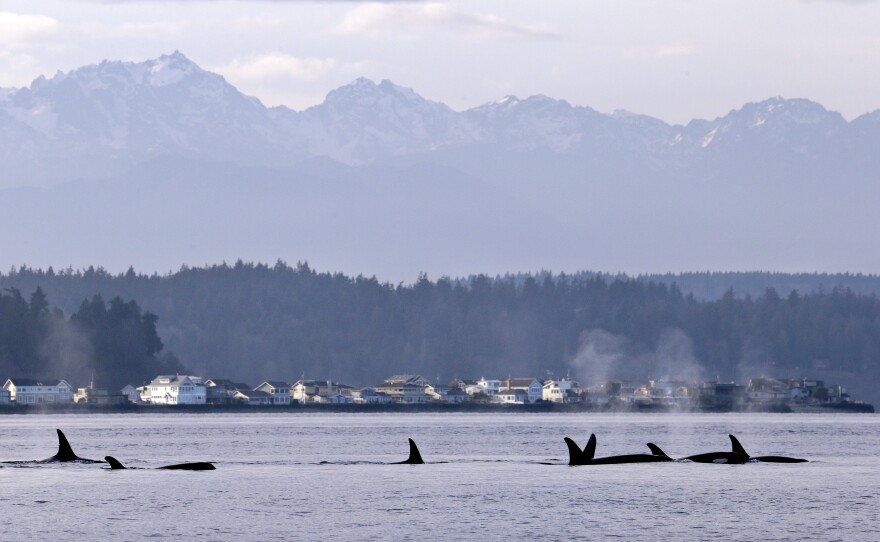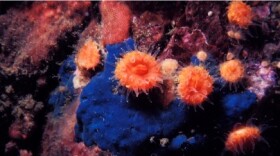Whale scientists have spotted several Southern Resident orcas off the west side of San Juan Island, in Haro Strait. The sighting comes after an unprecedented absence that had many worried.
It had been about eight weeks since any of the the Southern Resident killer whales were seen anywhere in the Salish Sea.
During the summer months into early fall, they normally hunt for salmon in the San Juans and Puget Sound. But their preferred prey of Chinook salmon have not been showing up. The last time any Southern Residents were sighted in local waters was the J pod family, for one day in May.
Several sources now confirm that the J and K pods were seen Thursday off Neah Bay before spreading out Friday morning to follow fish in the strait between Vancouver Island and the San Juans.
Jeanne Hyde with The Whale Museum at Friday Harbor, who monitors whale calls, said she also heard the distinct calls of L pod, but could not confirm a visual.
"We saw much socializing, but not much feeding," said Ken Balcomb, principle investigator at the Center for Whale Research in Friday Harbor.
Balcomb added in his email that "the whales looked well-fed, however. No 'peanut-heads,'" referring to the shape of malnourished whales.
He confirmed that one of the new calves, J-56, is a female. Hyde captured a close up image from shore of the young whale swimming with its mother, J-31. She was among a scrum of whale watchers delighted by the orcas' visit to the area near Lime Kiln Point State Park.

“There are also several groups of Bigg's and Humpbacks in the region, and most of the whale watch community has been with those whales this morning,” said Maya’s Legacy captain and co-owner Jeff Friedman in an email Friday.
Bigg’s killer whales are the marine-mammal eating orcas known as "transients" because they have a much wider range than the resident, fish-eating killer whales that follow salmon runs. The transients are thriving and have been visible in unprecedented numbers, thanks in part to booming numbers of seals and sea lions that they eat.
Friedman is U.S. President of the Pacific Whale Watch Association. Association members say only about 15 percent of their whale watching activity has been of the southern residents in recent years.
Both the southern resident orcas and Chinook salmon are endangered species. Noise from vessel traffic makes finding what little fish there is harder for the orcas because they hunt using echolocation. Toxics in the water are also threatening the whales' survival and causing high rates of miscarriage and infant mortality.
The latest population count as of May is 76 in the wild, including two babies born this year.









